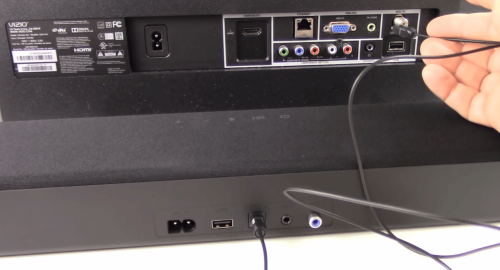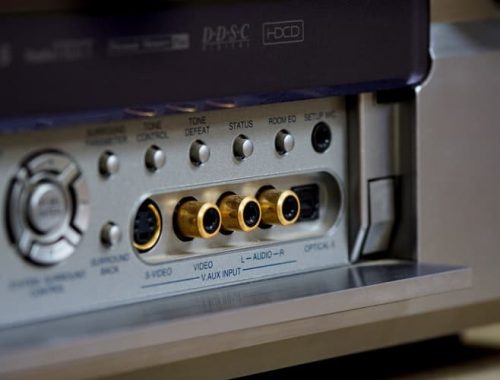An optical digital connection is a common way of exchanging audio signals between devices via an audio cable, but do you need it? Is it useful for your purposes? Here, our experts will explain what a digital audio cable is and how it works.
What Is a Digital Audio Cable?
A digital audio cable is an optic cable that you connect from digital devices like DVDs, computers, video game consoles to receivers such as a home theater system. Also known as TOSLINK or Toshiba link, digital audio cables are mostly made of cheap plastic and high-grade optical strands and range from between five to ten meters.
A digital optical cable transmits digital audio signals in the form of LED light between devices. However, to work at optimal best, the cable shouldn’t be bent or have a sharp kink.

How Does a Digital Cable Work?
A digital cable consists of multiple, small diameter fibers that transmit signals as pulses of light from the device to the receiver. This fiber optic cable has several polished plastic strands immune to electrical interference and Radio Frequency Interference (RFI).
A digital cable is connected from the device with an optical output port, like a TV, to the receiver with an optical input port, like an amplifier or a home theater system. Once this connection is established, you can begin exchanging audio signals.
Audio Formats Supported
Digital optical cables don’t support many audio formats, such as SACD, Dolby Digital Plus, Dolby Atmos, DTS-HD Master Audio. However, they can support Lossless 2.0 stereo PCM audio and compressed 2.0, 5.1, and 7.1 Dolby Digital [1].
When To Use a Digital Audio Cable
You can use a digital audio cable if the AV equipment lacks an HDMI port. In most cases, HDMI cables do the job of transferring if there’s an HDMI port, and it’s best to use it because it supports higher-resolution audio formats, such as DTS-HD Master Audio. It can send videos as well.
However, in the absence of an HDMI port, using digital audio cables would be the best alternative. Also, for older devices with HDMI ports that don’t have audio support transfer, you can use the digital audio cable.

FAQ
What is a digital audio output on TV?
Digital audio output on TV is the optical jack, designed for output sound if the video you are viewing contains digital audio.
Is optical audio better than HDMI?
Optical audio isn’t better than HDMI. Optical audio cable only supports specific audio formats, whereas HDMI supports various formats, including high-resolution formats like DTS-HD Master Audio and Dolby Atmos. Also, HDMI supports video transfer, unlike optical audio.
What does a digital audio cable look like?
A digital audio cable has a square-shaped mouth with a tip embedded in a plastic or high-grade optical stranded cable. It can come in various colors, lengths, and of course, prices, depending on the brand.
What is a coaxial digital audio cable?
A coaxial digital audio cable is like an optical audio cable. You can use it for sending digital audio between two connected devices — the sender and the receiver via the coaxial port.
Coaxial cables support higher resolution audio formats like 24/192, unlike optical digital audio cable. However, they can be affected by electromagnetic interference, whereas an optical digital audio cable won’t.
Can I use HDMI and optical audio at the same time?
You can’t use HDMI and optical audio cable at the same time, especially when it comes to the audio output. You can’t have sound coming from both if connected. You can use both simultaneously if you want both video and audio coming from the receiver’s HDMI and optical cable.
Is digital optical better than aux?
Digital optical is better than aux or auxiliary cable when you consider some factors, such as sound quality, resistance to interference, and support for different audio formats.
With aux cables, there’s electrical interference, which can distort the receiver’s sound quality. Digital optical, on the other hand, isn’t as prone to interference as aux.
Digital optical supports more audio formats than aux, such as Dolby surround, and that optical audio is digital makes it relatively better than aux that’s analog.
Conclusion
Digital audio cable is one of the more popular transfer cables available. As evident in this article by our team of experts, it allows the exchange of audio signals from one device to the other while boosting the sound quality.
Moreover, it has support for Lossless 2.0 stereo PCM audio and compressed 2.0, 5.1, 7.1 Dolby Digital, which makes it a great option.
Planning to convert your wired speakers to wireless one? Check out the best wireless speaker kit that can help you transform your audio system into wireless option.
